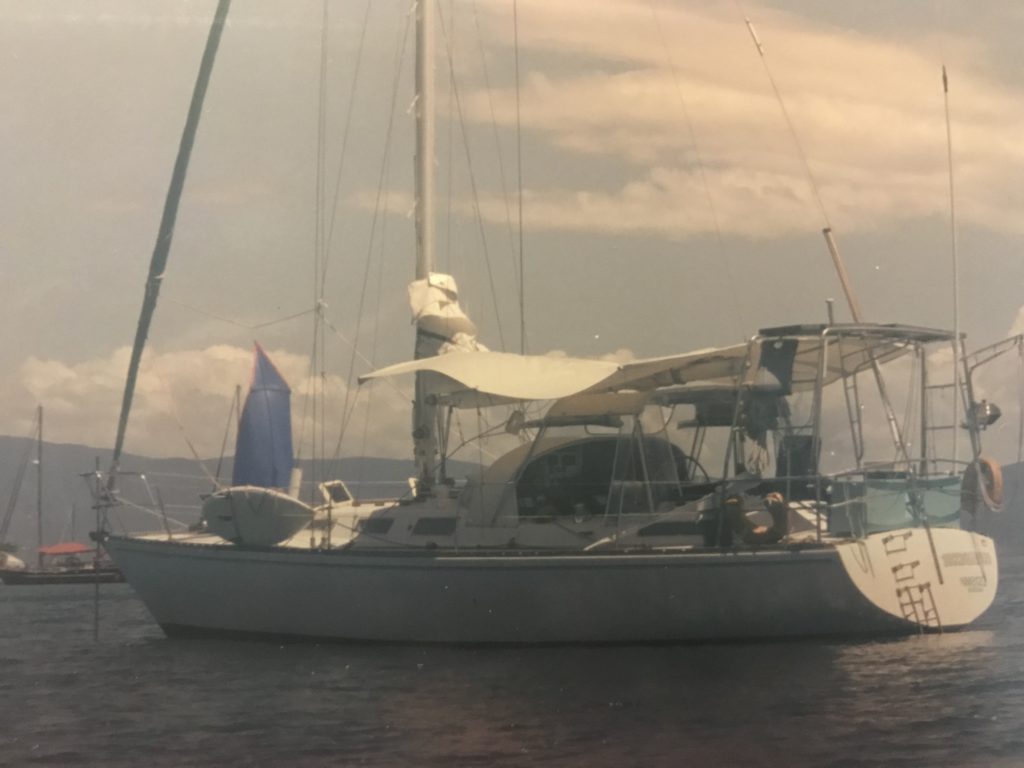Setting the mainsail
- Ensure all ports and hatches are closed
- Ensure all gear and equipment is stowed away correctly.
- Always set the mainsail first if you are going to use both sails.
- Check the main halyard shackle is secure.
- Check the main halyard is free, not twisted and has unobstructed access to the top sheave at the top of the mast.
- Ensure the sail cover is clear and all the sail ties are removed.
- Make sure all non-required reefing lines are unlocked from rope jam cleats and are free to move up with the sail.
- Assess the wind strength and fit one or two reefs as required. Usually, the one reef should be put in at 13-18 knots winds strength and two reefs tied when the wind approaches 18-23 knots. Note that reefing is very important and is done in order to keep the boat under control, to avoid sail damage, rigging failure and injury.
- Turn the boat straight into the wind and motor slowly forward. You need to keep the boat moving through the water in order to keep the dinghy away from the back and to maintain steerage.
- Release the main sheet.
- Raise the sail slowly, so the sail moves up through the lazy jacks and the battens do not get caught on the way up. You need to be steering straight into the wind. If they do catch, release the halyard tension, drop the sail a little until clear then try again. Never force any halyard and check that reef lines and sail slides do not get caught. It is important to have someone always watching the mainsail when it is being winched up the mast.
- Finally tension the Mainsail halyard, then set the desired course. You can then trim the sail using the main sheet.
- The main halyard should be stowed away or tied securely so it will not fall or wash over the side.
Lowering
- Once the headsail is furled you can then turn the boat into wind, (use the motor to keep the boat heading upwind) tighten the main sheet.
- Release the main halyard. If the halyard is through a rope jam cleat, please put the halyard around the winch and tension it slightly before releasing the jam cleat otherwise you will break the jam cleat.
- Again, be careful that the mainsail slides down the mast and does not catch on the lazy-jacks. Always watch the sail as it comes down and assist it where necessary.
- If you have reefs in the mainsail, just remember that they will still be tied the next time you put the sail up and will need to be untied if the main is to go all the way up.



